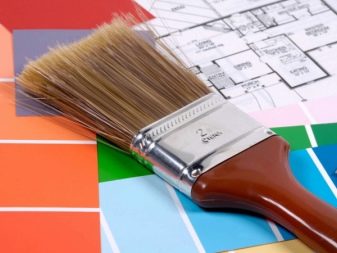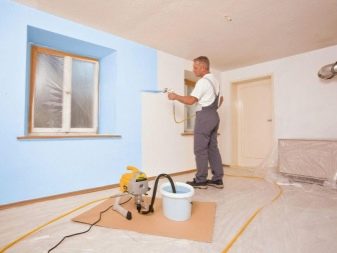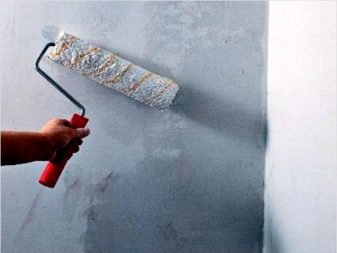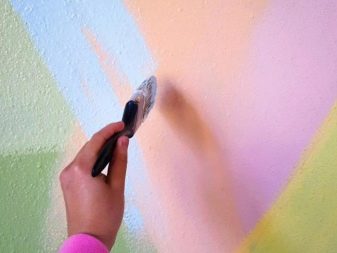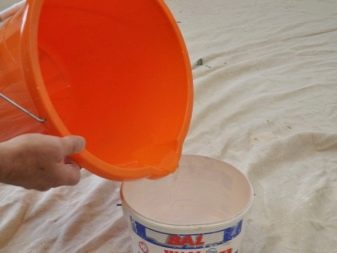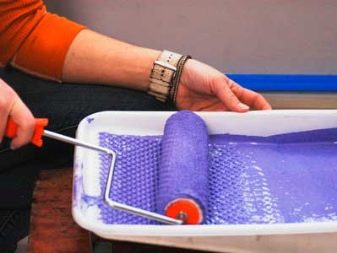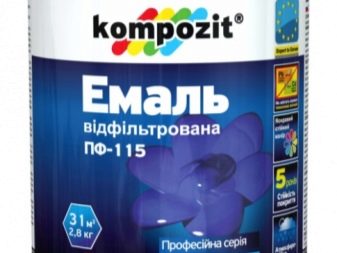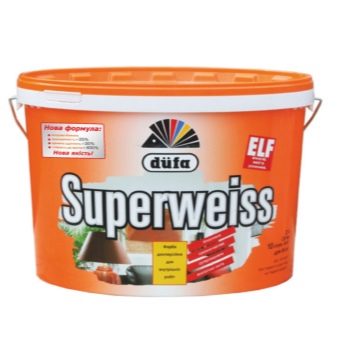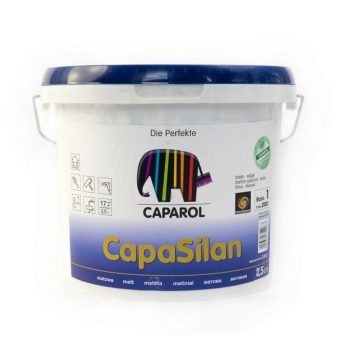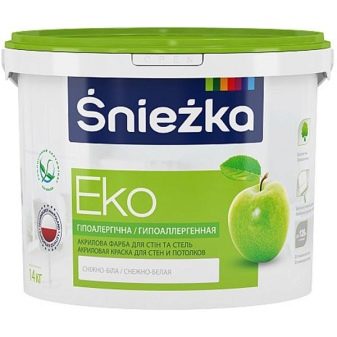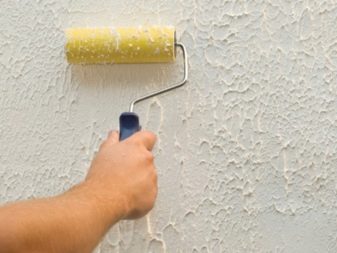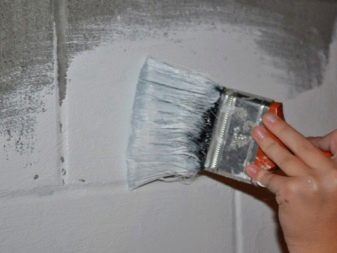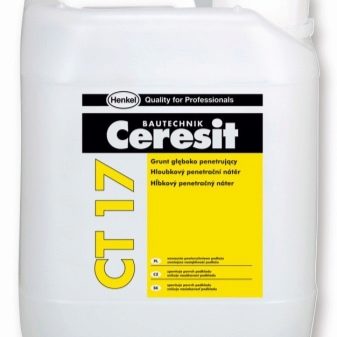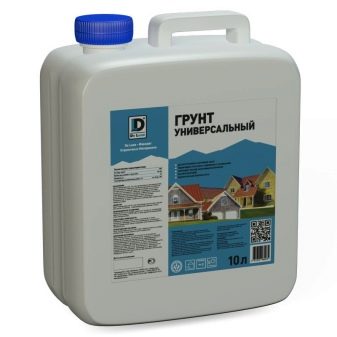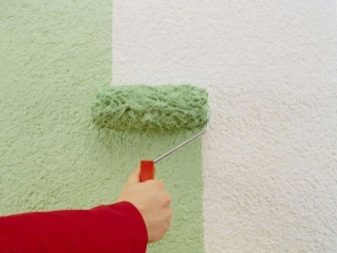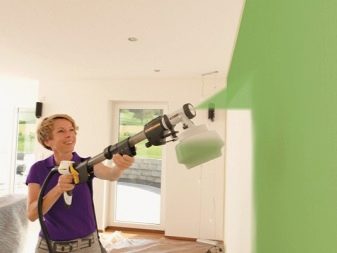Paint consumption per 1 square. m square of walls: we make calculation according to the chosen material
Today painting has become the most common way to finish the walls. Almost every owner of the house can personally transform the interior of his apartment using only paint. The final cost of the work will depend on how well the required coloring matter will be calculated, and it will be possible to avoid buying excess paint.
Consumption factors
Before you start to count the amount of paint that will be required during the finishing of one room or the entire apartment, you need to examine all the factors that affect the consumption of such a composition. Usually, the dye consumption per 1 m2 of surface is calculated.
It seems to many that it is very simple to make a calculation: it is necessary to measure the surface area of the walls and the ceiling that need processing, and, having studied the instructions on the packaging of the goods, you can get to work. But this is an ideal “trajectory”, that is, when the area is absolutely smooth.
In fact, many factors affect the amount of paint consumed:
- the method by which the paint product is applied;
- Colour;
- type of composition;
- the type of surface that needs treatment.
It is necessary to take into account all the above aspects in order to correctly calculate how much the mixture is required.
Types of paints
Paint fluidity and its type are the main factors that influence the counting. This indicator is called "hiding power" and is different in all types of mixture.
Acrylic paint
Acrylic paint is a water-dispersion mixture, which is based on acrylic. Coloring pastes use special colored pastes, which are also created on the basis of this raw material. The surface that is painted will have a matte color.
Compounds of this type are widely used both in internal and external repair work.One of the main advantages of the acrylic composition is that it is resistant to ultraviolet radiation, which is why it is so well fixed on the facade walls and does not lose its color in the sun. Decorative qualities persist for 5 years.
1 liter per 8 square meters - this is the consumption of acrylic mixture when painting the surface of walls. Here the calculation goes on one layer. However, this figure may differ from paints from different manufacturers.
The amount of product that will be needed during the work depends on the quality of the product. Walls are coated with acrylic paint in at least two layers, preferably in three.
It is advisable to pre-coat the walls with a primer, since it is possible to significantly reduce material consumption.
Acrylic primer can be made with your own hands. To do this, mix white acrylic with water and put it on the walls.
The proportion should be 50/50. The ceilings are covered with matt latex paint.
Water emulsion paint
This variety is not resistant to moisture, since it is based on an aqueous solution. In order to give it water-repellent properties, use various additives.
Firstly, its consumption per 1 square meter will depend on the density of water-based paint. m. If the mixture is too thick, then it must be diluted with water. The emulsion should be applied in a thin layer. After complete drying of the first layer, you need to go through the paint one more time.
Calculation of water-based paints produced from the standards of 1 l per 10 m2 of the painted area. But in reality, this figure can vary from 1l per 6 m2 to 1l per 18 m2, so it becomes much more difficult to make an exact calculation. Everything will depend on side factors: the structure of the area, thickness and color.
Oil paint. During the production of such compounds often use linseed oil. It acts as a solvent. After such a composition is applied to the surface, it begins to polymerize in fresh air.
Enamel PF-115 is the most common composition of oil paints, can create a film of increased strength. Such a film has a uniform texture. If you paint the wall with one layer, the estimated paint consumption will be 120-130 grams. on 1 m2.
During the counting of the quantity you need to know that the consumption of oil paint will depend on the color. The "hiding power" of pigments is greatly influenced by the density of the mixture used.
Below are examples of indicators of consumption of the mixture per 1 kg:
- black color - up to 20 m2;
- blue color - up to 17 m2;
- blue color - up to 15 m2;
- green color - 13 m2;
- white color - up to 10 m2;
- yellow color - up to 10 m2.
According to the above data, you can see: the lighter the color, the smaller the surface can be covered with it.
Manufacturers
Below is a list of the best manufacturers of paints and varnishes:
- Dufa superweiss - differs in durability and purity of color. The paint is used in small rooms, allows you to visually increase the amount of space.
- Caparol capaSilan - the manufacturer focuses on the silicone coating of ceilings. The paint has the ability to gloss over small cracks up to 2 mm.
- Dulux - the best option when painting ceilings. Manufacturing country - United Kingdom.
- Halo Discount - ceiling paint that dries in 1.5 - 2 times faster than paints from other manufacturers.
- Tikkurila Euro 7 - A very expensive option, featuring excellent product quality. The paint is resistant to ultraviolet rays.
- Ceresit CT 54 - paint and varnish products for facade work. The product is endowed with anti-fungal properties.
- SNIEZKA EKO - suitable for use on any type of surface. However, the flow rate is quite large, which is a significant drawback.
- "Expert" - paint from the manufacturer DEKART. The only drawback of the product is excessive density.This can be solved, but this problem is not indicated in the instructions on the package.
- Tex Pro - enough budget version of the paint, characterized by the absence of a strong odor.
Surface to be treated
The calculation of paint consumption also depends on the type and texture of the surface to be painted. The flow rate may increase by several times if the paint is applied to the plaster or concrete, and a smooth dense surface, such as sheet steel or galvanized, significantly reduces this figure.
Today, people resort to a variety of ways to reduce surface porosity. Wood constructions are pre-sanded and coated with several layers of drying oil, the base is coated with primer.
Priming compositions are designed to fill small pores and small cracks on the surface that needs to be painted. This reduces the level of absorbency of the paint and varnish product, thus it is possible to avoid unnecessary expenses for painting.
Application Method
The way in which the paint is applied also affects how much material will have to be spent.
If during the painting work to use a spray gun, then you can save up to 10-15% of the paint and varnish mixture, rather than when working with a roller or paint brush.
True use of the spray gun is not always suitable.
Having studied the above information, almost every person will be able to correctly calculate how much composition they need, even without having the special skills of a plasterer-painter. Of course, there are many aspects that affect this indicator, so even professionals can not make an exact calculation, but the approximate consumption of the mixture can always be calculated.
For information on how to determine paint consumption, see the following video.



